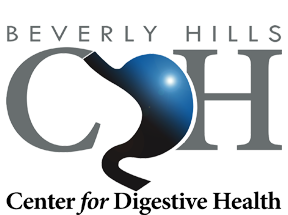Foods to Add to Your Diet to Reduce Heartburn
BOOK APPOINTMENTFor heartburn sufferers, the elimination of certain foods always seems to be the first course of therapy. Most of us find it disappointing and sometimes difficult to eliminate favorite foods, but there is good news — those foods can be replaced with new favorites that can actually help alleviate the problem. Many low-acid, high-fiber foods are delicious and are an excellent place to start.

What Is Heartburn?
Heartburn (also known as acid reflux) is a condition that occurs when acids in the stomach get pushed upwards into the esophagus. This burning sensation does more than cause discomfort — it can actually do damage to the esophageal lining over time. Therefore, controlling heartburn not only alleviates the burning sensation but also protects the anatomy of your digestive system.
Let Food Be Thy Medicine
As Greek physician Hippocrates understood even in ancient times, foods can heal. Thankfully, you don’t have to be a dietitian to learn the dynamics of digestion and develop a meal plan that works for you. The key is to dilute stomach acids as much as possible and prevent over-eating.
Low-Acid Foods
It makes sense that acidic foods can exacerbate heartburn. Since the stomach already contains acids that aid in digestion, adding more acid will just make things worse. The real culprit in acid reflux is the esophageal sphincter. This is the area that cinches the tube where food passes into the stomach. When this tube is weakened or relaxes, acids backflow and create heartburn symptoms.
Eating primarily low-acid foods will help reduce the overall acidity in the stomach, which will then reduce the frequency of heartburn. Low-acid foods include:
- Green veggies
- Bananas
- Cauliflower
- Fish
- Lean meats
- Egg whites
High-Fiber Foods
High-fiber foods can fill you up quickly and keep you satiated longer, which will make you less likely to overeat. Overeating presents a problem with the stomach gets too full and puts pressure on the esophagus, making heartburn more likely. Choose from high-fiber foods such as:
- Whole grains (including oatmeal, rice, and couscous)
- Root vegetables
- Nuts and seeds
- Beans and legumes
Determining Your Triggers
Everyone responds to foods differently, so it may take some trial and error to figure out exactly what diet staples work best for you. For most people, a diet of low-acid, high-fiber foods helps give some relief. But if your symptoms are severe and persistent, a gastroenterologist can help you determine your triggers and prescribe medication if necessary. Contact Dr. Davidson and his team today to schedule a consultation.
Our Blogs
Bloating Should Not Be Your Normal
If you’re constantly dealing with a swollen or uncomfortable belly, your gut might be trying to tell you something. Common causes include: Food intolerances Imbalanced gut bacteria IBS or other digestive issues Eating habits and stress levels The good news, there’s a...
Your Digestive Health Deserves Attention
Your gut health matters more than you think. Every symptom tells a story - bloating, discomfort, heartburn, or changes in digestion can all be signs that your body needs care and attention. At Beverly Hills Center for Digestive Health, Dr. Mark Davidson helps patients...
Happy Halloween 2025 from Your Los Angeles Gastroenterologist!
Happy Halloween from Beverly Hills Center for Digestive Health! 👻 Go ahead and enjoy those sweet treats, but remember — moderation keeps your tummy happy. 🍬✨ If you notice bloating, indigestion, or stomach discomfort after the festivities, it might be time to check in...
Call to Schedule
Our office is available to answer your questions and evaluate your symptoms.

Phone
(310) 855-0222
Fax: (949) 404-6467
Hours
Mon - Fri: 9am – 5pm
Sat - Sun: Closed